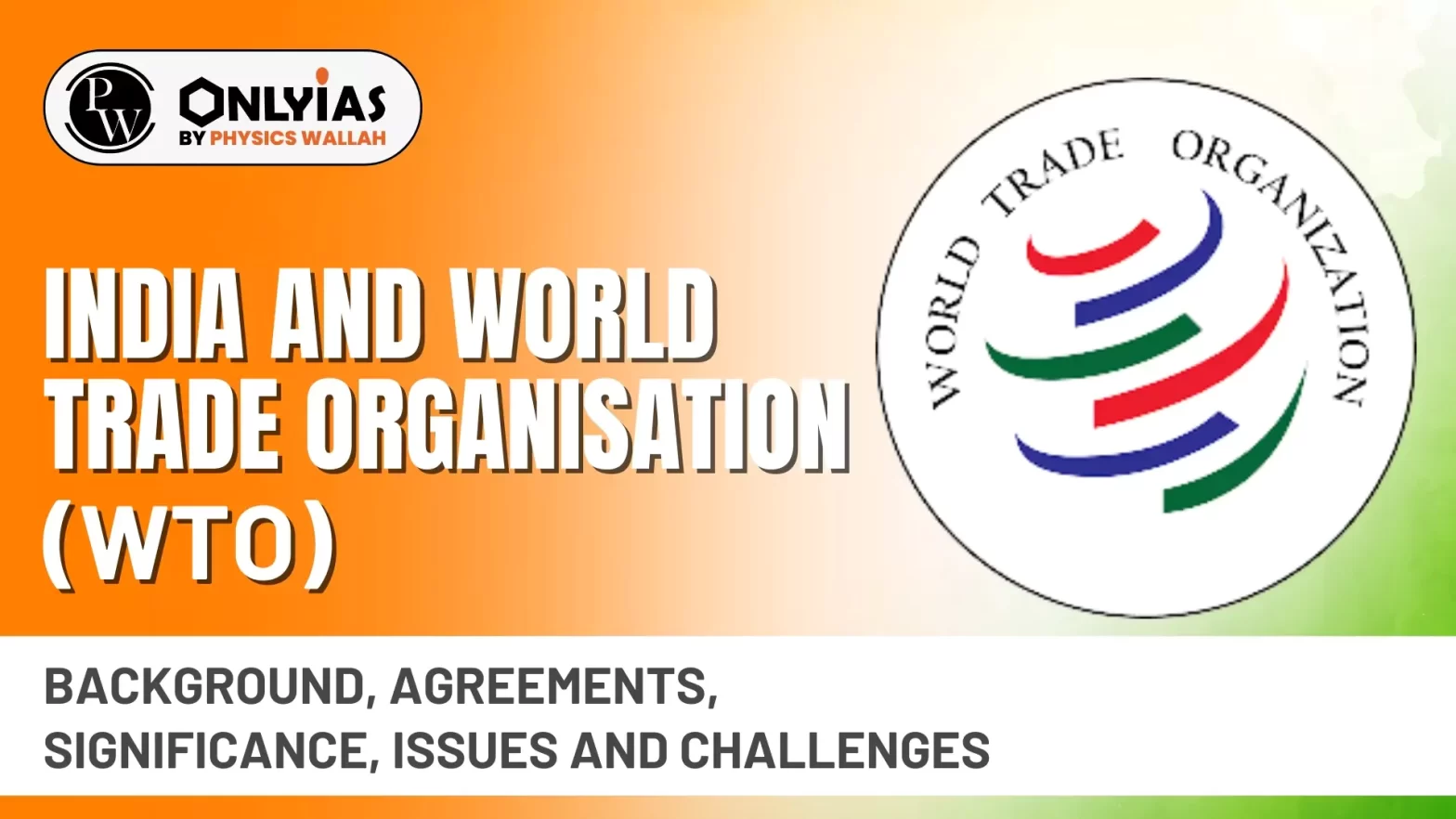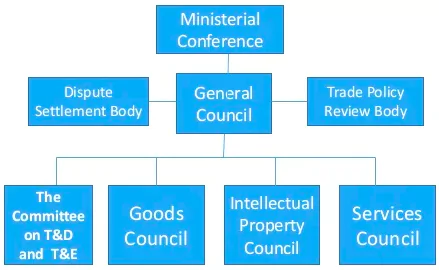![]() 6 Feb 2024
6 Feb 2024

This article is based on the news “How to restore WTO’s authority” which was published in the Indian Express. The 13th Ministerial Ministerial Conference (MC13) of WTO is scheduled to be organised in Abu Dhabi from 26 February to 29th February 2024.
| Relevancy for Prelims: 13th Ministerial Ministerial Conference of WTO, General Agreement on Tariffs and Trade (GATT), Marrakesh Agreement, Agreement on Agriculture
Relevancy for Mains: India and World Trade Organisation (WTO): Background, Agreements, Significance, Issues, Challenges and Way Forward. |
|---|
Marrakesh Agreement
|
|---|


| Public Stockholding: It is a policy in which the government purchases and stores food staples to ensure their availability at affordable prices. It is used as a tool by many developing countries to mitigate food crisis caused by price vitality and food insecurity
Example: The MSP scheme. |
|---|
About G33 Countries
|
|---|
Peace Clause:
|
|---|
About Appellate Body
|
|---|
| Must Read | |
| NCERT Notes For UPSC | UPSC Daily Current Affairs |
| UPSC Blogs | UPSC Daily Editorials |
| Daily Current Affairs Quiz | Daily Main Answer Writing |
| UPSC Mains Previous Year Papers | UPSC Test Series 2024 |

<div class="new-fform">
</div>